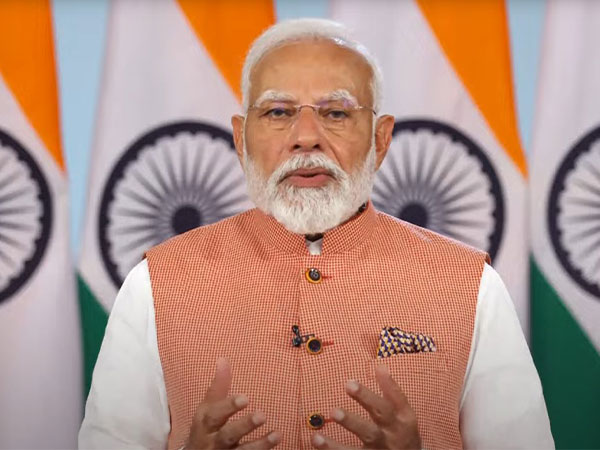Trump’s 50% Tariffs on India Trigger Economic Jolt as Modi Moves to Cushion the Blow
- Flexi Group
- Aug 28
- 3 min read
The United States has imposed tariffs of 50% on Indian goods, one of the steepest trade penalties in the world, in a move by President Donald Trump to punish New Delhi for continuing purchases of Russian oil and weapons. The sweeping measures, which took effect on Wednesday, include a 25% surcharge tied directly to transactions with Russia that Washington says are helping fund Moscow’s war in Ukraine.

India, long considered a crucial US partner in the Indo-Pacific, has refused to back down, dismissing the duties as unfair. Officials in Delhi insist that the government will pursue the “best deal” when it comes to sourcing oil in order to safeguard the needs of its 1.4 billion citizens.
The trade shock has sparked deep concern that India’s exports and overall economic growth could falter. Until recently, the US was New Delhi’s largest trading partner, a status now threatened by the tariffs.
Faced with the fallout, Prime Minister Narendra Modi has promised a sweeping tax relief plan designed to blunt the impact on industries and households. Earlier this month, he pledged to deliver a “massive tax bonanza” for ordinary citizens and millions of small enterprises that form the backbone of Asia’s third-largest economy.
Speaking on Independence Day from Delhi’s Red Fort, Modi wore a bright saffron turban as he addressed thousands of spectators. He urged business owners and shopkeepers to promote “Swadeshi” or “Made in India” by displaying it proudly outside their stores. “We should become self-reliant – not out of desperation, but out of pride,” Modi declared. “Economic selfishness is on the rise globally and we mustn’t sit and cry about our difficulties, we must rise above and not allow others to hold us in their clutches.” He has since repeated this call in multiple public speeches, stressing that India must both produce and consume domestically.
Yet despite subsidies and incentives, manufacturing has struggled to gain traction, remaining stuck at around 15% of gross domestic product. Economists argue that direct tax reforms are more likely to provide immediate relief. Following a $12 billion income tax reduction announced in this year’s budget, Modi is now pushing for a fundamental restructuring of the goods and services tax (GST).
Introduced eight years ago, the GST was designed to replace a maze of indirect levies, but experts say the system has grown unwieldy with numerous exemptions and thresholds. The finance ministry has now put forward a proposal for a simplified two-tier GST regime. Analysts at US brokerage firm Jeffries believe that, alongside the existing income tax cuts, the GST overhaul—expected to cost around $20 billion—will provide “a meaningful push to consumption.”
Consumption accounts for nearly 60% of India’s GDP. While rural spending has been buoyed by a strong harvest, demand in urban areas has slowed due to weaker wages and layoffs, particularly in the IT sector following the pandemic. Morgan Stanley has argued that Modi’s tax cuts amount to a “fiscal stimulus” that will both drive GDP growth and help cool inflation. “This is particularly crucial amid headwinds from ongoing global geopolitical tensions and adverse global tariff-related developments that might impair external demand,” the bank noted.
Consumer-oriented sectors such as scooters, small cars, garments and even cement—key to India’s housing boom around Diwali—are expected to be among the biggest beneficiaries. Analysts believe the revenue hit from GST changes can be absorbed through higher-than-expected tax collections and dividends from the central bank. Swiss investment bank UBS has gone further, saying that the GST cuts will carry a bigger “multiplier effect” than earlier corporate or income tax reductions, since they “directly affect consumption at the point of purchase, potentially leading to higher consumer spending.”
The Reserve Bank of India may also be prompted to ease policy further. Having already lowered interest rates by 1% in recent months, a more generous tax environment could encourage another cut, spurring fresh lending. Combined with scheduled salary hikes for nearly five million government workers and pension increases for 6.8 million retirees next year, the measures are expected to underpin growth momentum.
Markets have reacted positively. Indian stocks have climbed on optimism that reforms and tax breaks will shield the economy. In addition, India received a rare upgrade in its sovereign rating from S&P Global earlier this month, the first in 18 years, a move that lowers borrowing costs and is likely to attract more foreign investment.
Nonetheless, growth has slowed from the 8% pace of just a few years ago, and the external crisis shows no sign of easing. Trade negotiations with Washington, which were set to begin this week, have been suspended as rhetoric between the two capitals escalates over energy ties with Russia.
At 50%, experts say the tariffs amount to a de facto sanction on trade between the world’s largest and fastest-growing economies—an outcome that few would have imagined until only recently.
By fLEXI tEAM
.png)
.png)







Comments